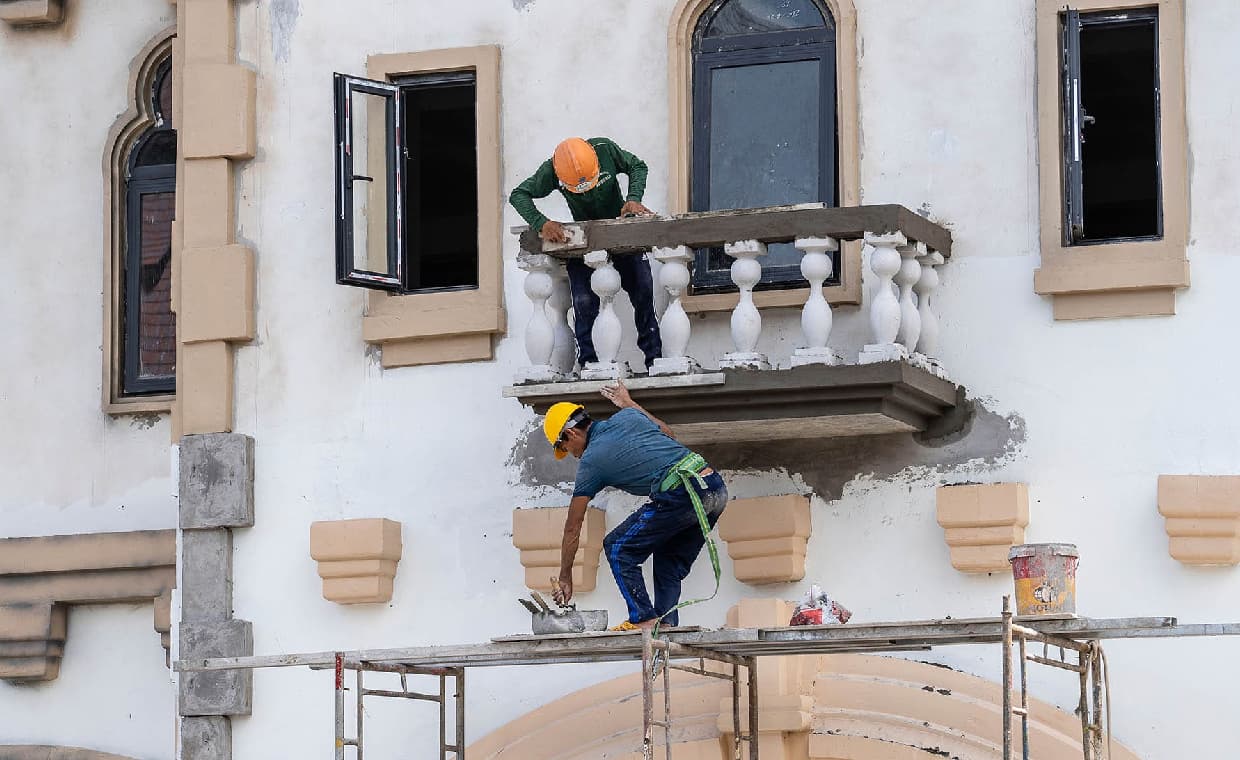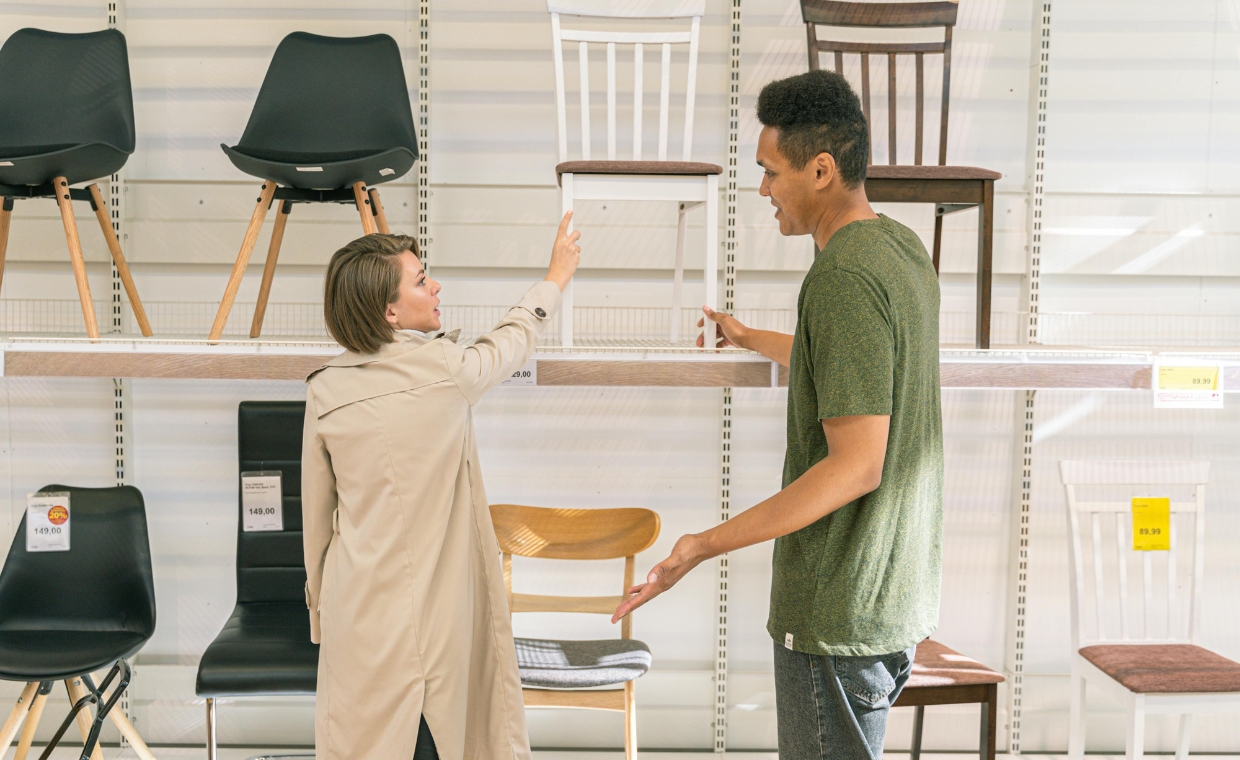
Balconies are an essential feature of many homes and buildings, offering a place for relaxation and outdoor enjoyment. However, they are often exposed to the elements, which makes them vulnerable to wear and tear over time. One of the most common problems homeowners face is a leaking balcony. If left untreated, a leaking balcony can cause significant structural damage, mold growth, and costly repairs.
In this blog post, we’ll explore five common signs of leakage in balcony and provide guidance on how to fix it before the damage worsens. Recognizing these early signs can save you from extensive balcony repairs in the future.
Signs of Leakage in Balcony and How to Fix Them:
Watch out for these signs of a leaking balcony and follow these steps for easy balcony repair:
01. Water Stains or Discoloration on the Underside of the Balcony:

One of the most noticeable signs of a leaking balcony is the appearance of water stains or discoloration on the ceiling or walls directly beneath it. Water that seeps through cracks or gaps in the balcony’s waterproofing layer can cause staining, which often appears as yellow or brown patches.
Why This Happens:
Balconies are exposed to rain, snow, and humidity, all of which can penetrate if the waterproofing membrane is compromised. Over time, these water leaks can cause not only cosmetic damage but also structural issues. Waterlogged concrete and metal reinforcements may weaken the balcony’s support, leading to dangerous situations.
How to Fix It:
- Assess the Waterproofing: Check the condition of the waterproofing layer under the balcony tiles or surface. If it’s damaged, it will need to be repaired or replaced.
- Apply a Waterproof Sealant: After cleaning the surface and making any necessary repairs, apply a waterproof membrane or sealant to prevent future leaks. This can either be a DIY project or handled by professionals specializing in balcony repairs.
- Consider Professional Help: In cases where structural damage is present, such as sagging or deep water infiltration, it’s best to call in a structural engineer to assess the damage and provide guidance on balcony repairs.
02. Cracks in the Balcony Tiles or Surface:
Cracks in the tiles or surface of your balcony are not just an aesthetic issue. They are one of the most common signs of a potential water leakage in balcony. When water gets into cracks and gaps, it can seep through the layers underneath, weakening the structure and causing further damage.
Why This Happens:
Balconies endure a lot of foot traffic and weather-related stress. Over time, the expansion and contraction of materials due to temperature changes can lead to cracks in tiles or concrete surfaces. If left unchecked, water will infiltrate these cracks, making the situation worse.
How to Fix It:
- Replace Damaged Tiles: If the cracks are limited to specific tiles, they can be easily replaced. Be sure to apply a waterproof membrane beneath the new tiles.
- Repair Surface Cracks: For concrete or surface cracks, a concrete patching compound can be used to fill in the gaps. Once the cracks are filled, reapply waterproofing sealants.
- Re-Tiling: In cases where multiple tiles are cracked, it might be worth considering re-tiling the entire surface. Be sure to address the underlying cause of the cracking, such as insufficient expansion joints, during the re-tiling process to prevent future issues.
03. Pooling or Standing Water:

Another clear indication of a leaking balcony is the presence of pooling or standing water on the surface. While it may seem like a minor inconvenience, standing water can lead to serious structural problems over time.
Why This Happens
Standing water is typically caused by poor drainage, either due to inadequate slope or blocked drainage systems. Water should always flow away from the building and off the balcony, but if the drainage is insufficient or the surface isn’t sloped properly, water will accumulate, leading to leaks and potential structural damage.
How to Fix It
- Check the Slope: Ensure that your balcony is properly sloped to allow water to drain away. If the slope is inadequate, you may need to resurface the balcony to create a better gradient.
- Clean and Unblock Drains: Ensure that all balcony drains are clear and functioning. Blocked drains can cause water to pool, so regular maintenance is crucial.
- Install Drainage Solutions: In cases of severe pooling, installing additional drainage systems, such as weep holes or trench drains, may be necessary to ensure water flows away from the building.
04. Peeling or Bubbling Paint on Walls Beneath the Balcony:
Peeling or bubbling paint on the walls directly beneath a balcony can indicate a water leak. When water penetrates through the balcony and reaches the walls below, it can cause the paint to separate from the surface, leading to peeling or bubbling.
Why This Happens
Moisture trapped between the wall and the paint causes the paint to lose its adhesive properties. This is a sign that water is making its way through cracks in the balcony structure or through the waterproof membrane. Left untreated, this can lead to mold growth and even more severe water damage inside the home.
How to Fix It
- Identify the Source of the Leak: Before addressing the cosmetic issue, you need to identify and repair the source of the water leak. Look for cracks, gaps, or broken seals on the balcony surface.
- Reapply Waterproofing: Once the source of the leak is fixed, reapply waterproofing to the balcony surface to prevent future leaks.
- Repaint the Walls: After ensuring the area is dry and moisture-free, remove the peeling paint, sand the surface, and repaint it using mold-resistant, waterproof paint to prevent future problems.
05. Mold or Mildew Growth:

One of the more serious consequences of balcony leakage is the growth of mold and mildew, especially on the surfaces beneath the balcony or inside the home. Mold is not only unsightly but also harmful to health, as it can lead to respiratory issues and allergies.
Why This Happens
Mold thrives in damp, poorly ventilated areas. When there is leakage in balcony, water seeps into the surrounding materials, creating the perfect environment for mold and mildew to grow. If you notice mold in areas adjacent to the balcony, it’s a strong indication that water is leaking through.
How to Fix It
- Address the Leak: The first step is to repair the leak. Without stopping the water infiltration, any mold removal efforts will be temporary.
- Remove Mold: Use mold removal products to clean the affected areas thoroughly. In severe cases, it may be necessary to call in professionals to remove mold from within walls or floors.
- Improve Ventilation: Mold thrives in damp, stagnant environments. Ensure that the area around the balcony is well-ventilated to prevent future mold growth.
- Regular Balcony Maintenance: To prevent mold from returning, make sure your balcony is regularly inspected for cracks, standing water, and other issues that can lead to water penetration.
Seal the Deal: Safeguard Your Balcony and Home with Timely Repairs:
Balconies are an excellent feature for any home, but they require regular maintenance and attention. Water leaks, if left unchecked, can lead to structural damage, mold growth, and significant balcony repairs. By keeping an eye out for the common signs discussed in this article—water stains, cracks, pooling water, peeling paint, and mold—you can catch leakage in balcony early and address them before they become more severe.
Leaking Balcony repairs may range from simple fixes, such as replacing cracked tiles or applying new waterproofing, to more complex solutions, like addressing structural damage or poor drainage. If you’re ever unsure about the severity of the damage, it’s always best to consult a professional who specializes in balcony repairs to ensure that the issue is properly resolved.
Taking a proactive approach to balcony maintenance will save you time, money, and hassle in the long run. By recognizing the signs of a leaking balcony and taking swift action, you can enjoy your outdoor space with peace of mind, knowing that your home’s structure is protected from water damage.
Create a relaxing balcony with our design tips:






























